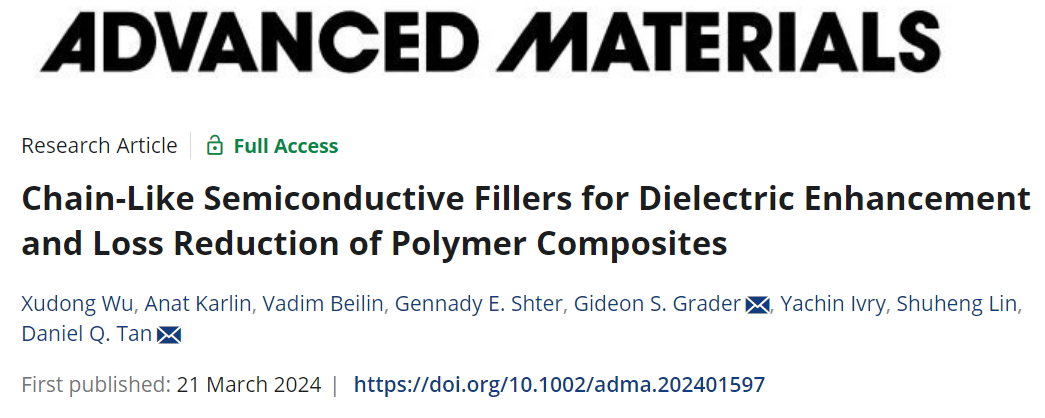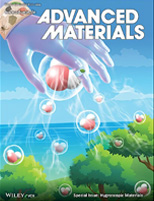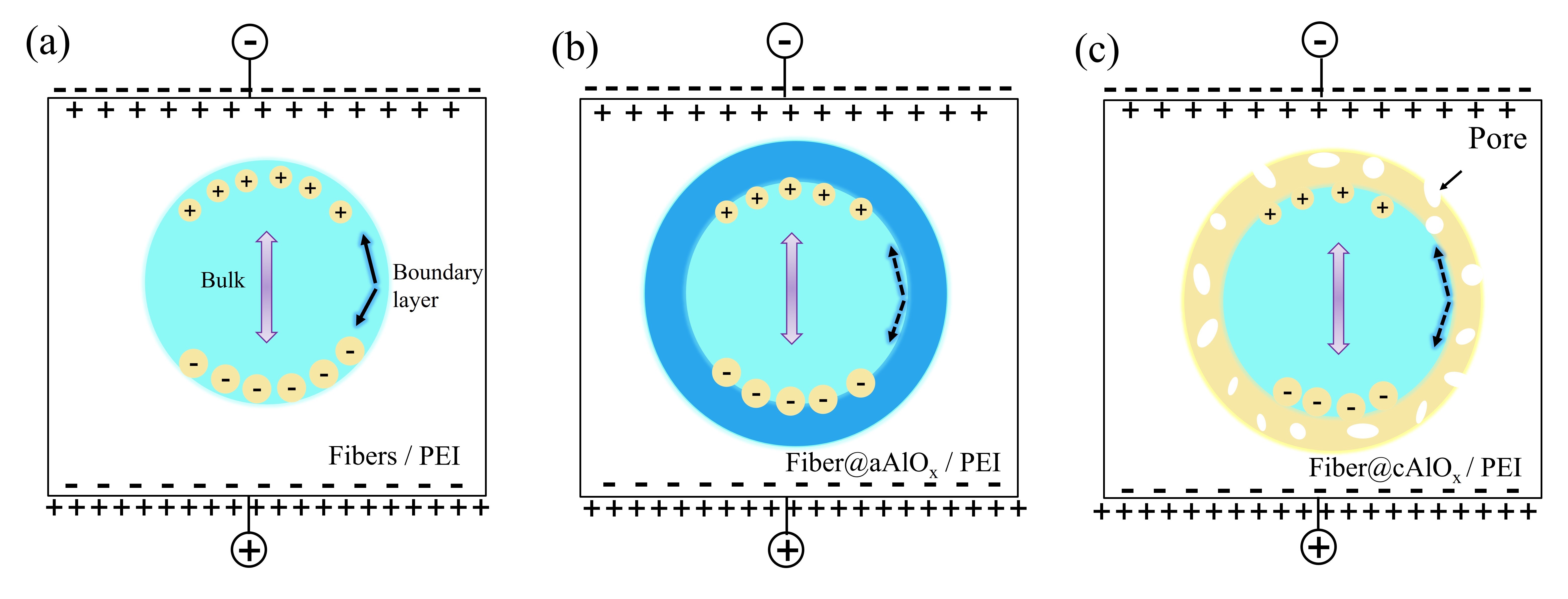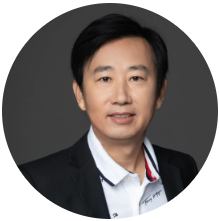PostTime:3/26/2024
Professor Daniel Q. Tan's research group from the Department of Materials Science and Engineering at Guangdong Technion - Israel Institute of Technology (GTIIT), in collaboration with Gideon S. Grader's group from the Department of Chemical Engineering at Technion-Israel Institute of Technology, has developed two types of chain fiber inorganic materials to study the dielectric properties of polymer composites. Part of the research results titled with “Chain-Like Semiconductive Fillers for Dielectric Enhancement and Loss Reduction of Polymer Composites” was published in the Advanced Materials. The first author of this paper is Wu Xudong, a doctoral student who obtained a master's degree from University of Science and Technology of China. He has published 10 relevant papers since joining Professor Tan's research group.

Advanced Materials Journal Introduction

Advanced Materials, one of the world's most prestigious journals and the foundation of the Advanced portfolio, is the home of choice for best-in-class materials science for more than 30 years. It covers important achievements in fields such as material physics, material chemistry, metal materials, computational materials, and engineering materials. The journal belongs to the TOP Journal of SCI-1 category of the Chinese Academy of Sciences with an impact factor of 29.4 in 2023.
About the research
Dielectric materials are widely used in fields such as microelectronics, power electronics, power grids, medical equipment, and military. In the past 20 years, the development of advanced dielectrics with excellent performance has received widespread attention, and achieving the improvement of the dielectric constant of polymer composite films and the reduction of dielectric loss at high temperatures are key research topics.
The widely used method currently is to incorporate inorganic materials into polymers to enhance their dielectric constant. The morphology and physical properties of inorganic fillers have a significant impact on the dielectric properties and interfacial polarization between polymers and inorganic fillers. The most reported work currently is the construction of dielectric composite materials using spherical and rod-shaped fillers, but there is a lack of understanding of the contribution of filler morphology and electrical conductivity to complex dielectric responses. This article uses electrospinning, calcination, and rapid annealing methods to design and synthesize two types of chain-like nanofibers (TiO2 and TINO), providing a unique method for studying dielectric response and interface contribution.

Fig.1 (a) Synthesis of chain-like nanofibers by electrospinning. (b) Surface coating of nanofibers by ALD alumina and annealing treatment for phase transition and pore formation of the shell. (c) Preparation of PEI/nanofibers composites by solution casting.
Chain-like nanofibers have special joints between interconnected particles, and exhibit significant polarization when tilted in amorphous polyetherimide (PEI) polymers. When distributed almost horizontally, the polarization contribution of the particles dominates. So, no matter how the chain-like fibers are distributed, the filler can participate in a significant polarization response. Therefore, the dielectric constant of the polymer is significantly increased by more than five times, and the higher the temperature, the more significant the dielectric effect. This polarization effect is rarely reported in traditional isolated spherical and rod-shaped fillers.
How to reduce the high-temperature loss of dielectric composite materials remains a key issue. These two types of chain fibers exhibit semiconductor properties at low temperatures and conductor properties at high temperatures, providing convenience for studying dielectric losses at different temperatures. In order to reduce high-temperature losses, researchers used atomic layer deposition (ALD) technique to deposit aluminum oxide shells to passivate the surface of fibers. Due to the effects of energy barriers, interface traps, and scattering centers, it is difficult for carriers to cross the core-shell interface and contact polymer chains. In addition, the weakening effect of the electric field effectively suppresses interface charge accumulation, thereby reducing dielectric loss. Furthermore, after heat treatment, the amorphous alumina shell is transformed into a crystalline porous nano-shell, making interface engineering more effective. This method has a significant effect on suppressing high-temperature and low-frequency dielectric losses.

Figure 2. Proposed mechanism of charge carriers or conductivity-induced high-temperature interfacial polarization. The yellow circles with positive and negative signs represent space charges.

谭启(Daniel Tan)
Professor and Deputy Head
of Materials Science and Engineering Program
Daniel Tan was recruited and appointed by Technion - Israel Institute of Technology as the professor of Guangdong Technion - Israel Institute of Technology in August 2018. Dr. Tan received a Ph. D. in Materials Science and Engineering from University of Illinois at Urbana-Champaign (UIUC) in 1998, and a Ph.D in Solid State Physics from Chinese Academy of Science in 1989 following Academician T.S.Ke. He used to teach at the University of Science and Technology of China. In 1994-1995, he moved to the United States as a visiting scientist (Argonne National Laboratory and UIUC). He joined Honeywell Corp. in 1998 as a Sr. Scientist to develop high-K ferroelectric materials for semiconductor industry. During 2000-2004, he was recruited to CTS Corp. as a Sr. Staff Engineer to develop high performance piezoelectric transducers and cell phone antenna materials. In the following 12 years, he dedicated his passion, innovation and pioneering efforts in Nanodielectrics and Energy Storage to General Electric. In 2016, he joined W.L.Gore as a Sr. Polymer Dielectric Scientist to further the high performance polymer investigations for capacitor and membrane technology.
Dr. Tan has authored/co-authored over 90 journal papers, 2 college teaching textbooks, 3 book chapters, and 50 corporate internal reports. As an innovator, he holds 55 patents and trade secrets in the field of ceramics, polymers, energy storage and electronic components. He has pioneered development in nanodielectric composites, high temperature and high energy density capacitors as a principal scientist for industry and US government. He is the recipient of various awards including the First Place Prize of Natural Science Award of Chinese Academy of Science (1993), GE Global Research Innovation Award (2008), 2022 Best Teaching Award of Guangdong Technion - Israel Institute of Technology, and The Most Worthy Technology Investment Award from the China Innovation and Entrepreneurship Fair 2023. He is a member of MRS, ACERS, SPIE, iMAPS and IEEE and reviewers of several journals.
Paper link
https://onlinelibrary.wiley.com/doi/10.1002/adma.202401597?af=R
Text/Photos: Wu Xudong, GTIIT News & Public Affairs
© GUANGDONG TECHNION-ISRAEL INSTITUTE OF TECHNOLOGY | 粤ICP备17036470号
